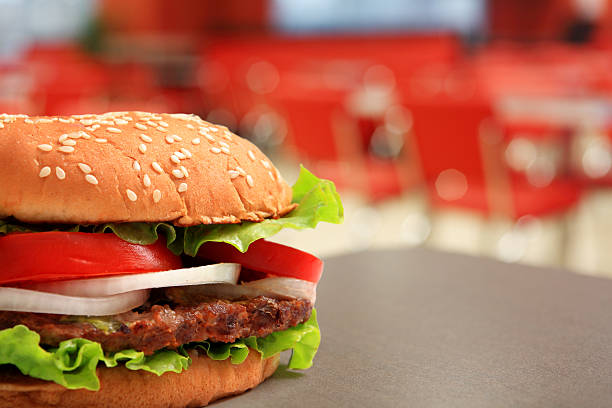When hunger strikes and the tantalizing thought of sinking your teeth into a juicy burger arises, the classic Whopper from Burger King often stands out as a go-to indulgence for many. But in an age where calorie-consciousness goes hand-in-hand with culinary cravings, a critical question looms: How many calories in a Whopper? This seemingly simple inquiry is not only relevant for those tracking their daily intake but also speaks volumes about our relationship with fast food and overall health.
As a beloved icon in the fast-food world, the Whopper has satisfied appetites for generations with its flame-grilled patty, fresh vegetables, creamy mayonnaise, and soft sesame seed bun. Yet, behind its mouthwatering facade lies a numerical value that might influence your decision to include it in your diet. With expertise rooted in nutritional knowledge and a keen understanding of fast-food cuisine, we delve into the caloric content of this famous burger to provide you with accurate, actionable information.
Contents
What are Calories?
Calories are a unit of measurement used to quantify the energy content of food and drinks. When we consume food, our bodies extract energy from it in the form of calories to fuel various bodily functions and activities. The calorie content of a food item indicates how much energy it provides when consumed. It is essential to balance the number of calories consumed with the amount of energy expended through physical activity to maintain a healthy weight and overall well-being.
How Many Calories In A Whopper?
A Whopper from Burger King typically contains around 660-700 calories, with variations depending on factors like patty size, condiments, and regional differences. The calorie content can change based on additions like cheese or bacon. It’s important to note that a Whopper is considered a high-calorie food due to its saturated fat and sodium content, making it less ideal for those who are health-conscious.
Factors Affecting Calorie Content

See more : 4 Ingredient Slow Cooker Chicken With Stuffing | Quick Prep
The calorie count of a Whopper can vary based on customization choices:
- Patty size: A single (1/4 lb) patty Whopper has fewer calories than a double (1/2 lb) patty Whopper.
- Extra toppings: Adding extra toppings like bacon, avocado or guacamole increases calories.
- Cheese: Opting for extra slices of cheese boosts calorie and fat content.
- Condiments: Choosing lighter condiments like mustard over mayonnaise reduces calories.
- Bun type: A lettuce wrap or low-carb bun saves calories over the sesame seed bun.
- Cooking method: A flame-grilled patty is lower in fat and calories than a crispy chicken or fried fish patty.
Nutritional Profile Analysis
Here is the nutritional breakdown for a standard Whopper:
| Nutrient | Amount | % Daily Value |
|---|---|---|
| Calories | 685 | 34% |
| Total Fat | 36 g | 55% |
| Saturated Fat | 12 g | 60% |
| Trans Fat | 1.5 g | – |
| Cholesterol | 105 mg | 35% |
| Sodium | 1080 mg | 45% |
| Total Carbohydrates | 49 g | 18% |
| Dietary Fiber | 2 g | 8% |
| Protein | 34 g | 68% |
Saturated Fat: With 12g, a Whopper supplies 60% of the recommended daily saturated fat intake. Saturated fat raises LDL (“bad”) cholesterol levels and increases risk of heart disease.
Sodium: The 1080mg sodium accounts for 45% of the daily recommended limit. High sodium is linked to high blood pressure.
Protein: A positive is the Whopper’s 34g of protein. Protein helps maintain muscle mass and keeps you feeling full.
See more : How Much Caffeine In Chocolate? Facts You Can’t Miss
Micronutrients: The Whopper lacks beneficial vitamins, minerals and antioxidants found in fruits, veggies and whole grains.
Health Implications
The Whopper’s high saturated fat and sodium content should prompt caution:
- The American Heart Association recommends limiting saturated fat to 13g daily. One Whopper exceeds this.
- Eating high sodium foods regularly can increase blood pressure, raising heart disease and stroke risk.
- The high calorie count can contribute to weight gain and obesity if consumed frequently without exercise.
- Processed meat like hamburgers may be linked to increased cancer risk when eaten in excess.
However, an occasional Whopper likely poses little risk for most healthy individuals. It’s regular and excessive intake that creates health concerns.
Customization for a Healthier Whopper

Some easy ways to lighten up your Whopper:
- Go bun-less: Skipping the 150 calorie bun saves carbs. Get it lettuce wrapped instead.
- Cut the cheese: Say no to cheese to avoid 90 extra calories and 6g fat.
- Limit condiments: Mustard has only 5 calories. Light mayo has 35 calories per packet.
- Pick a smaller patty :Switch to a Jr Whopper patty and cut over 100 calories.
- More veggies, less sauce: Get extra tomatoes, onions, lettuce and pickles instead of sauces.
- Grilled chicken: A grilled chicken Whopper has around 560 calories, less fat than beef.
- Beverage swap: Water or diet soda saves 150+ calories versus a sugary soft drink.
Comparison with Other Burgers
| Burger | Calories | Fat (g) | Sodium (mg) |
|---|---|---|---|
| Whopper | 685 | 36 | 1080 |
| Big Mac | 563 | 28 | 950 |
| Wendy’s Classic Double | 670 | 40 | 890 |
| Shake Shack Double ShackBurger | 660 | 38 | 1140 |
The Whopper has more calories than a Big Mac, but less than a Double ShackBurger. It’s mid-range for sodium content. In terms of health value, none provide great nutrition. But Whopper customizations like a Jr patty in a lettuce wrap make it more diet-friendly.
Conclusion: How Many Calories In A Whopper?
The Whopper’s elevated calorie, fat, sodium and cholesterol content should give consumers pause. While an occasional indulgence may be harmless for most, regular intake promotes weight gain and increases disease risk. Customizing your burger with healthier ingredients and side choices can mitigate the damage. But emphasizing home cooked whole foods, moderation, variety and exercise is best for lasting wellbeing. The Whopper can satisfy an occasional craving, but shouldn’t replace balanced nutrition.

Michael J. Fanola is the chef and owner of Joe’s French Italian Inn Restaurants. He has over 30 years of culinary experience, and his restaurants have been voted “Best Italian Restaurant” by the readers of the Staten Island Advance for many years in a row. Michael is a graduate of the prestigious Culinary Institute of America, and he has worked in some of the most highly acclaimed kitchens in the country.








